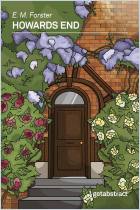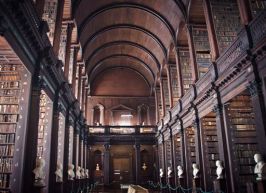
A Passage to India
- Novel
- Modernism
What It’s About
Mission Impossible
There are few 20th-century novels that offer a more astute insight into the complex world of colonial India and the problematic relationships between rulers and the ruled than E.M. Forster’s A Passage to India. His tale of attempted friendships between Indians and Brits is at times funny, at times sad – but always full of respect for and a keen understanding of the two cultures that are poles apart. It is also a tale of disappointment and pessimism as character after character abandons their attempts to bridge the gap between Orient and Occident. Considering this, you would be forgiven for thinking this novel to be a hard read and bleak beyond endurance, were it not for the fact that its author is a master craftsman of language and one of the finest writers in world literature.
Summary
About the Author
Edward Morgan Forster was born on January 1, 1879, in London. His father died early, and he grew up in the sole care of his mother. The sensitive Forster had a tough time with his schoolmates and escaped into the world of literature. It wasn’t until he started studying the classics at King’s College, Cambridge, that he began forming friendships. Sadly, many of these suffered from misunderstandings due to Forster’s homosexual tendencies. After finishing his studies, he traveled in Europe with his mother. This experience inspired his first novel Where Angels Fear to Tread, published in 1905. Further novels followed, including A Room with a View (1908) and Howards End (1910). During the 1910s and 1920s, he was a member of the legendary Bloomsbury Group. In 1907, he met the Indian nobleman Syed Ross Masood and fell in love with him. Forster’s feelings were unrequited, but he refused to give up. In 1912, Forster visited Masood in India. It was during this trip that he started A Passage to India, though he didn’t finished the novel until 10 years later after his second visit to the country as the private secretary of the Maharajah of Dewas. A Passage to India was to be Forster’s last novel, and it won him several prizes. After its publication, he went on to become a literary critic and successful broadcaster on BBC Radio. He continued to live with his mother until her death in 1945. In 1946, Forster became an Honorary Fellow at King’s College, which allowed him to live there without any obligation to teach during the last 24 years of his life. As a staunch democrat, he turned down a knighthood but was made a Companion of Honour in 1953. Only his closest friends knew about Forster’s homosexuality, and his homoerotic novel Maurice wasn’t published until 1971, one year after he died of a stroke at age 91 in Coventry.











Comment on this summary or Start Discussion